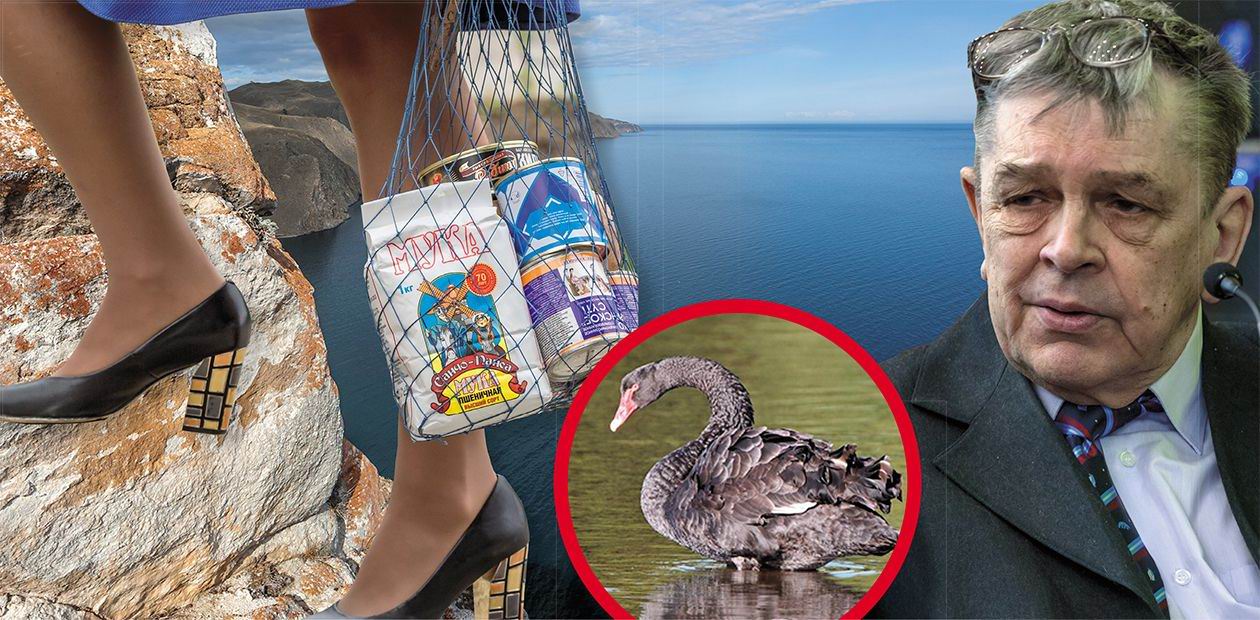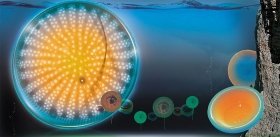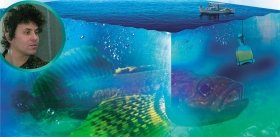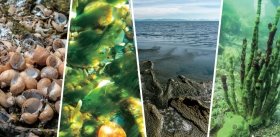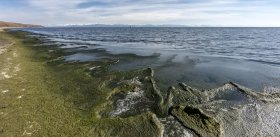Maybe-Bag and Let It Be. Ecological Crisis in Lake Baikal: A Mystery of the Century
Prologue
TV shows a nightmarish picture: three gigantic mountains of plastic waste, mostly used bottles and bags, have piled up in the oceans. Plastic decomposes very slowly and produces tiniest scales; these scales are swallowed by fish and other inhabitants of the Ocean, who then die in terrible agony.
Neither foreigners nor young Russians can now remember themselves go shopping with an avoska, or maybe-bag, a string bag that was popular in the Soviet times.
An obvious solution: let’s prohibit plastic bags and bottles worldwide. Let’s give everyone a string maybe-bag and replace plastic bottles with glass ones, and, maybe, there will be no plastic mountains in the ocean. This may look fine and feasible, however... It is not that simple. The production of plastic creates millions of jobs and generates enormous profits. As long as consumer society holds sway, there will be plastic in the ocean, fish will suffer and shrimps will die...
Ecological crisis in Lake Baikal
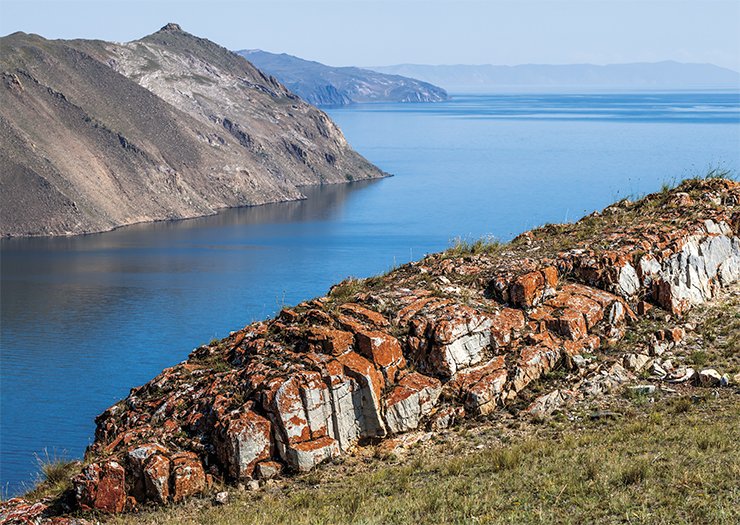
The ecological crisis in Lake Baikal, which began in 2011, has been vastly discussed in scientific literature by my colleagues and other scientists, as well as in the media; we can hear about it on the radio and television. We are constantly reminded about the crisis by nongovernmental organizations, such as the environmental movement led by Anzhelika Tissen (Severobaikalsk). The cause of the crisis is unclear. It is a large-scale phenomenon affecting the entire coastal zone of Lake Baikal all around the perimeter 1,800 km in length. Cows and horses do not drink the water; people cannot drink the water even after boiling. Swimmers slip down when they enter the lake. National Geographic calls the Baikal substance green slime, which covers the bottom. Previously, divers could see objects at a distance of 20—30 m, but now the visibility can at times be down to 2 m. This is the current state of the UNESCO World Heritage Site...
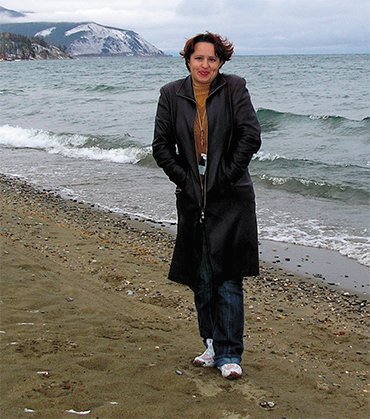 Here I will only briefly list the facts:
Here I will only briefly list the facts:
- Rampant proliferation of the filamentous green alga Spirogyra, an uncommon species in Lake Baikal, thousands and thousands of tons.
- Extinction of almost all of Baikal sponges, which belong to several endemic species.
- Disappearance of the August herd of Baikal sculpins, which is one of the food resources for the Baikal omul.
- Excessive growth of cyanobacteria on diseased and dead sponges and on the bottom; the formation of thick slippery algal—bacterial mats.
- Emergence of cyanobacteria that produce saxitoxin, a deadly nerve poison.
All these processes occur in the coastal zone with a width of about 100—200 m and a depth of 25—50 m; at this depth there is still sunlight, which is essential for the development of Spirogyra.
Since 2011, Tissen has been approaching all levels of government, seeking their support to save Lake Baikal, and not without success. She has recently met with Vyacheslav Nagovitsyn, the head of the Republic of Buryatia. A wise man, he told her: “You should not worry about that; time will pass, and so will the crisis. Near Baikal there is a small lake, Kotokel, which also was in an environmental crisis a few years ago. Scientists expressed great concern; they could not figure out the exact cause, and we did almost nothing. Now Lake Kotokel is clean again, everything is alright.”
It is true that scientists do not know the cause of the Baikal crisis; finding this cause is an affair of honor for science
The pelagic (deep) zone of Lake Baikal has not been affected yet; there are no changes in the water chemistry, phytoplankton, the abundance of the Baikal omul, or the life conditions of the Baikal seal. These are facts, not just my opinion.
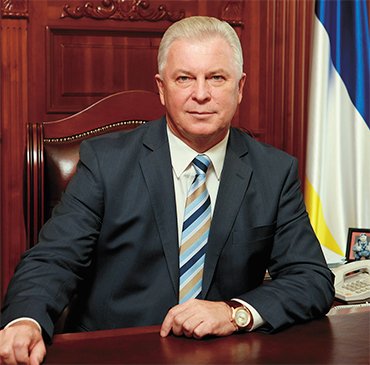 Over the past four years, we have organized 50 expeditions on board of four research vessels and several more expeditions on ice. We have made laboratory analyses and calculations; this work involved at least fifty our researchers and ten foreign scientists as well as Russian dedicated specialists. Our divers made 200 extreme dives to depths as great as 50 m. We acknowledge the very helpful support of the Federal Agency for Scientific Organizations (FASO Russia), which paid for the fuel, purchased spare parts for foreign instruments, and allowed us to make amendments to the government assignments.
Over the past four years, we have organized 50 expeditions on board of four research vessels and several more expeditions on ice. We have made laboratory analyses and calculations; this work involved at least fifty our researchers and ten foreign scientists as well as Russian dedicated specialists. Our divers made 200 extreme dives to depths as great as 50 m. We acknowledge the very helpful support of the Federal Agency for Scientific Organizations (FASO Russia), which paid for the fuel, purchased spare parts for foreign instruments, and allowed us to make amendments to the government assignments.
Lake Baikal is a complex system; not a very complex, but a complex one. This is a mathematical term rather than just a saying.
According to the English physicist Isaac Newton (1643—1727), if we knew the coordinates and momenta of every particle in the universe, then we could describe its past and predict the future. The old man was, however, wrong: we cannot do that, but not because we do not have the instruments, observers, or super sophisticated computers, but for fundamental philosophical reasons. All real-life systems in our world are complex and are never in equilibrium, and it is fundamentally impossible to predict their behavior.
However, scientists produce hypotheses—this is their job. Here I give a list of hypotheses about the possible causes of the Lake Baikal disaster (see the table).
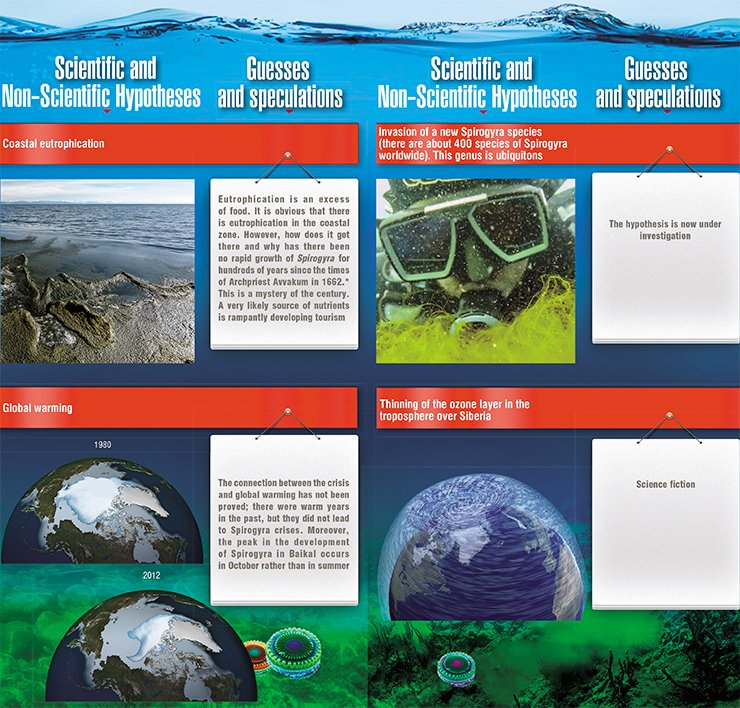
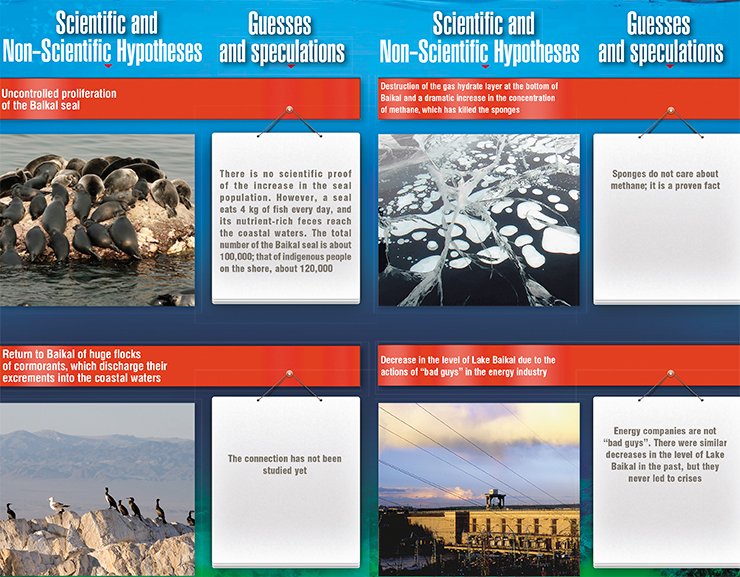
Mystery of the century
I call this crisis a mystery of the century, because at least for the last 100 years of scientific research Lake Baikal has never suffered such a disaster. And before that, in the days of the Russian Archpriest Avvakum, Spirogyra seems dared not to have make such a mischief. Where does the mystery lie? The people living on the shores of Lake Baikal dump into the water about 50 tons of inorganic phosphorus per year. The total amount of inorganic phosphorus in the lake is 308,000 tons, i. e. greater by a factor of 6,000. Moreover, a large part of the phosphorus flows away with the waters of the Angara River. A negligible annual addition—a 1/6,000 fraction—could not have caused and has not caused the eutrophication of the entire lake. Imagine that you have ordered a pot of peas, but the chef made a mistake and put one extra pea. Will it affect your weight?
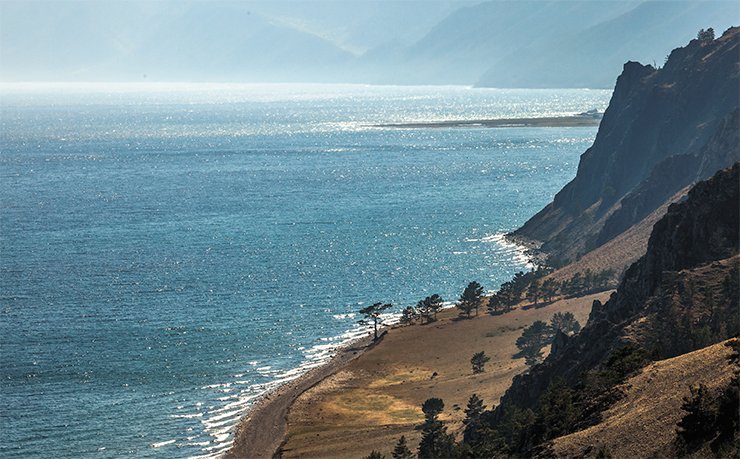
“...During the crossing the wind fell, and we had to use our oars. In that place the lake is not very wide, only eighty to one hundred versts or so. When we reached the other shore, a storm began to blow up, and we could scarcely land because of the waves. From the shore rose steep hills and sheer cliffs. I have dragged myself twenty thousand versts and more, but never have I seen such high mountains. And their summits are crowned with halls and turrets, pillars and gates, and walls and courts, all made by the hand of God. In those hills grow garlic and onion, the bulbs larger than those of Romanov onions, and very sweet. And there is also hemp, sown by God’s hand, and in the courts, beautiful grass and sweet-smelling flowers. There are wild fowl in great number–geese and swans floating on the lake like snow. And there are also fish: sturgeon and salmontrout, sterlet and omul and white-fish, and many other kinds. This is a fresh-water lake, but great seals and sea-hares live in it. I never saw the like in the great ocean, when I lived on the Mezen River. And the fish is abundant; the sturgeon and salmon-trout are so fleshy, one cannot fry them in a skillet, it would be nothing but fat. And all this has been created by Christ for man, that he should find pleasure in it and praise God.”
However, the addition of a pea of nutrients into the coastal waters of Lake Baikal could indeed cause the eutrophication of the coastal zone if the latter were separated from the open deep waters with a waterproof wall: the volume of the coastal zone is only five cubic kilometers whereas that of the entire lake is 23,000 cubic kilometers.
But there is no wall. Why does the water of the coastal zone not mix with that of the open lake? This is a very complex problem of fluid dynamics. Routine imitation models are useless; we need physical models that can only be designed by high-level physicists and mathematicians rather than by computer scientists. These mathematicians and physicists will also need experimental settings such as rotating vessels with water. A physical model of Lake Baikal will not appear tomorrow.
Moreover, we will have to explain not only the bloom of Spirogyra but the extinction of sponges and the well-being of poisonous cyanobacteria.
The mass mortality of marine sponges is observed worldwide—in the Gulf of Mexico, in the Caribbean Sea, in the North Atlantic, in the Mediterranean Sea, and on the Great Barrier Reef. However, this is the first time we have reported the mass mortality of freshwater sponges. The world’s leading biologists are searching for the cause of the mass mortality of marine sponges, blaming unknown microbes, global warming, poisons of human origin, increased supply of nutrients, etc. There have been studies since the mid-twentieth century, but so far they have led to no success, and it remains unknown why the sponges are dying.
Lake Baikal is a much simpler ecosystem than the Ocean, and our researchers could do a lot in three years if they were adequately financed. Many scientists from Russia and from abroad now study the sponge disease in Lake Baikal; probably, we will succeed, but we have very limited financial resources. We cannot work without chemicals and consumables, without repairing the instruments, without outsourcing, without reagent kits, etc. Unfortunately, there is no dedicated fund to solve emergent environmental disasters in Russia, and the regular financing is not sufficient. Of course, we reported about the crisis to the scientific community and policy makers as early as in 2011, but no special money came.
In 2012, the government adopted the Federal Targeted Program “On the Protection of Lake Baikal and on the Social and Economic Development of the Baikal Natural Territory” with a budget of 57 billion rubles (about $1 billion), but, unfortunately, according to the existing rules, this money cannot be spent on financing fundamental science, although we need only 0.4 % of this amount to try and understand what is happening. Without a better understanding of the nature of the disaster, one cannot be sure that the proposed measures will give a real result.
There are 29 wastewater treatment plants on the shores of Lake Baikal; however, only two are functioning, and even those two do not meet the existing very strict requirements adopted for Lake Baikal. The lake needs not the common facilities with biological treatment, but special treatment plants which can remove nitrogen and phosphorus. A common facility with biological treatment of sewage produced by a settlement on the shores of Lake Baikal will cost 400 million rubles (about $6 million). A special treatment plant for the removal of nitrogen and phosphorus would cost twice as much. However, the entire west coast of the lake lacks not only treatment plants but also sewage collection systems, without which treatment plants are useless.
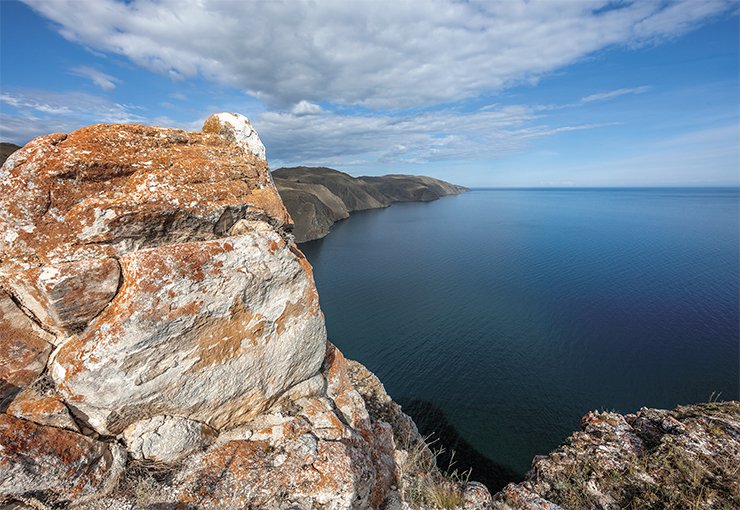
Two decades ago one could hope that Lake Baikal would cope with the human waste by itself. On the road leading from the city of Irkutsk to the settlement of Listvyanka, the nearest place for Baikal tourism 70 km off Irkutsk, there were a few dozen cars that went back and forth; herds of cows were wandering about, and the cars made way for them. According to the traffic police data, three thousand cars came to Listvyanka on one day in 2015, with an average of four people in a car. There are no sewage collection systems in most parts of Listvyanka, let alone sewage treatment plants; the wastewater from homes and hotels gets into the lake, one way or another, under the ground.
The construction of wastewater treatment plants and sewage collection systems on the shores of Lake Baikal will require much time and money.
However, let’s imagine for a moment that scientists are wrong; they made a mistake, and the beautiful facilities will fail to stop the crisis. The money for the phosphorus removal system will be spent in vain. However, a wastewater treatment plant must be built; this is the existing law. Policy-makers often have to issue decisions without having enough information; this is their work. But, of course, it would be better if information were at hand.
Now it is necessary to develop and test various systems to remove phosphorus from wastewater, build pilot wastewater treatment plants and, ideally, to prove that these efforts can stop and reverse the environmental crisis in Lake Baikal, and this is an affair of honor for us scientists.
We all know that a cheapskate pays twice. I am positive that the pilot plants will be built and tested. Today the attitude towards this issue has changed dramatically.
Black swan
The crisis in Lake Baikal is totally unexpected, and it is unlikely that it could have been predicted. Let me remind you that Baikal is a complex system.
There is a famous American philosopher, mathematician, economist and successful stock gambler, Nassim Nicholas Taleb. He was born in Lebanon in 1960. He calls the famous Harvard Business School a Soviet–Harvard institution, whose main task is to predict share prices and the welfare of the state. As he jokes, this school has a department of ornithology where birds are kept in cages and professors teach the birds to fly. They wave their arms, lift their legs, lower their noses... Three months later the cages are opened and the birds are released. Wow! The birds have learned to fly and they fly away. Glory to the professors! An excellent school!
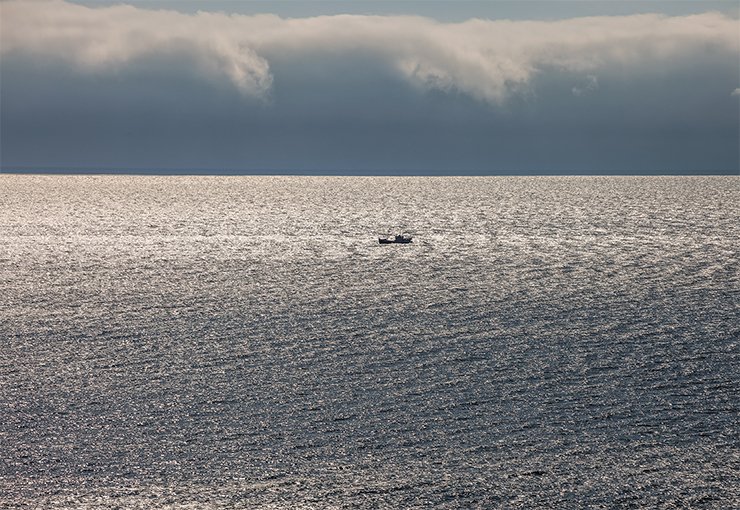
Taleb introduced the concept of a black swan. Russian economists appear to have heard of it. The black swan is a very rare event of a large amplitude, which is fundamentally impossible to predict, even if one has unlimited computing power. The typical Soviet–Harvard methods cannot be used to gamble on the stock market, to forecast the climate, or to predict oil prices and currency exchange rates. Neither can they be used to predict the results of our research, because Lake Baikal is a complex system in which infinitely small causes can sometimes lead to enormous consequences. Taleb’s secret was that he was always ready to meet a black swan.
We do hope for success. The money will come—our may-be bag is at hand. And let it be.
References
Bormotov, A. E. What has happened to Baikal sponges? // SCIENCE First Hand. N 2(32). 2012. P. 32—35.
Howard, B. C. Green slime invades world’s deepest lake // National Geographic. 2015. V. 7.
Itskovich, V. B., Shigarova, A. M., Glyzina, O. Yu. et al. Change in the Hsp70 content in the Biakal endemic sponge Lubomirskia Baicalensis during decolorization and under hypothermia // Aktual’nye problemy nauki Pribaikal’ya: Sbornik statei (Current Issues of Science in the Baikal Region: A Collection of Papers) / ed. by Bychkov, I. V. and Kazakov, A. L. N. 1. Irkutsk: Inst. Geograf. Sib. Otd. Ross. Akad. Nauk. 2015. P. 135—138 [in Russian].
Khanaev, I. V., Dzyuba, E. V., Kravtsova, L. S., and Grachev, M. A. The effect of bloom of filamentous green algae on the reproduction of yellowfin sculpin Cottocomephorus grewingkii (Dybowski, 1874) (Cottoidae) during ecological crisis in Lake Baikal // Dokl. Biol. Sci. 2016. V. 467. N. 1. P. 63—64.
Kravtsova, L. S., Izhboldina, L. A., Khanaev, I. V. et al. Disturbances of vertical zoning of green algae in the littoral area of the Listvennichnoye Bay, Lake Baikal, as a result of local anthropogenic effect // Dokl. Ross. Akad. Nauk. 2012. V. 447. N. 2. P. 227—229 [in Russian].
Kravtsova, L. S., Izhboldina, L. A., Khanaev, I. V. et al. Nearshore benthic blooms of filamentous green algae in Lake Baikal // J. Great Lakes Res. 2014. V. 40. P. 441—448.
Timoshkin, O. A., Samsonov, D. P., Yamamuro, M. et al. Rapid ecological change in the coastal zone of Lake Baikal (East Siberia): Is the site of the world’s greatest freshwater biodiversity in danger? // J. Great Lakes Res. 2016. V. 42. N. 3. P. 487—497
Vashchenko B. Aliens in Baikal // National Geographic Russia. 2015. N. 146. 6 p. [in Russian].
This publication uses the photos: p. 16 – by V. Korotkoruchko; NASA/Goddard Scientific Visualization Studio; p. 17, by S. Ihnken; p. 18 – Ministry of Natural Resources and Environment, Russia, Government Report “On the State of Lake Baikal and the Measures for Its Protection in 2014”; by V. Glupov, O. Khlystov, V. Korotkoruchko, and E. Volkova; p. 22 – Black swan, Cygnus atratus. Centiennal Park, Sydney, Australia, August 9, 2008. Photo: https://www.flickr.com


